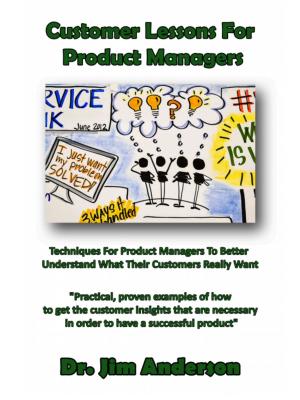How To Organize A Speech In Order To Make Your Point: How To Put Together A Speech That Will Capture And Hold Your Audience's Attention
Business & Finance, Business Reference, Business Communication| Author: | Jim Anderson | ISBN: | 9781370716920 |
| Publisher: | Jim Anderson | Publication: | December 7, 2016 |
| Imprint: | Smashwords Edition | Language: | English |
| Author: | Jim Anderson |
| ISBN: | 9781370716920 |
| Publisher: | Jim Anderson |
| Publication: | December 7, 2016 |
| Imprint: | Smashwords Edition |
| Language: | English |
The first step in creating a speech that will allow you to make your point is to first determine how best to organize it. There are a lot of different ways to go about doing this, but you are going to want to make sure that you'll be able to connect with your audience. This means that you'll need to be able to determine what your emotional intelligence quotient is.
What You'll Find Inside:
* SPEAKERS NEED TO KNOW WHAT THEIR EMOTIONAL INTELLIGENCE QUOTIENT IS
* NELSON MANDELA’S TIPS ON HOW TO CUSTOMIZE YOUR NEXT SPEECH
* HEY SPEAKER, WHAT’S YOUR ROOM IQ?
* WHAT HARRY POTTER CAN TEACH YOU ABOUT CREATING A SPEECH INTRODUCTION
If we want to make sure that we've organized our thoughts in a way that will allow us to get our message across to our audience, it can be helpful to look for guidance from those who have done it well in the past. One fantastic example is Nelson Mandel who really knew how to customize a speech.
Where you'll be speaking will play a role in how your audience interprets your speech. If you know how to use a room, then you and your message will be well received. In order to make this happen, you are going to have to employ your room IQ.
When we agree to give a speech, we hope that we can provide our audience with an uplifting message. However, there are times that we are called on to deliver bad news. We still have an obligation to connect with our audience and we need to make sure that the bad news does not obscure the importance of our message.
Organizing a speech involves more than just getting your introduction correct, you also have to manage your message. If you have been asked to apologize for something, how you structure your speech is going to be critical.
Every speech that we give occupies a set amount of time. The time that we have allocated and the time that we use may be two different things. As speakers, we need to make sure that we fully understand the power of time and that we use it to our best advantage during our next speech.
The first step in creating a speech that will allow you to make your point is to first determine how best to organize it. There are a lot of different ways to go about doing this, but you are going to want to make sure that you'll be able to connect with your audience. This means that you'll need to be able to determine what your emotional intelligence quotient is.
What You'll Find Inside:
* SPEAKERS NEED TO KNOW WHAT THEIR EMOTIONAL INTELLIGENCE QUOTIENT IS
* NELSON MANDELA’S TIPS ON HOW TO CUSTOMIZE YOUR NEXT SPEECH
* HEY SPEAKER, WHAT’S YOUR ROOM IQ?
* WHAT HARRY POTTER CAN TEACH YOU ABOUT CREATING A SPEECH INTRODUCTION
If we want to make sure that we've organized our thoughts in a way that will allow us to get our message across to our audience, it can be helpful to look for guidance from those who have done it well in the past. One fantastic example is Nelson Mandel who really knew how to customize a speech.
Where you'll be speaking will play a role in how your audience interprets your speech. If you know how to use a room, then you and your message will be well received. In order to make this happen, you are going to have to employ your room IQ.
When we agree to give a speech, we hope that we can provide our audience with an uplifting message. However, there are times that we are called on to deliver bad news. We still have an obligation to connect with our audience and we need to make sure that the bad news does not obscure the importance of our message.
Organizing a speech involves more than just getting your introduction correct, you also have to manage your message. If you have been asked to apologize for something, how you structure your speech is going to be critical.
Every speech that we give occupies a set amount of time. The time that we have allocated and the time that we use may be two different things. As speakers, we need to make sure that we fully understand the power of time and that we use it to our best advantage during our next speech.















